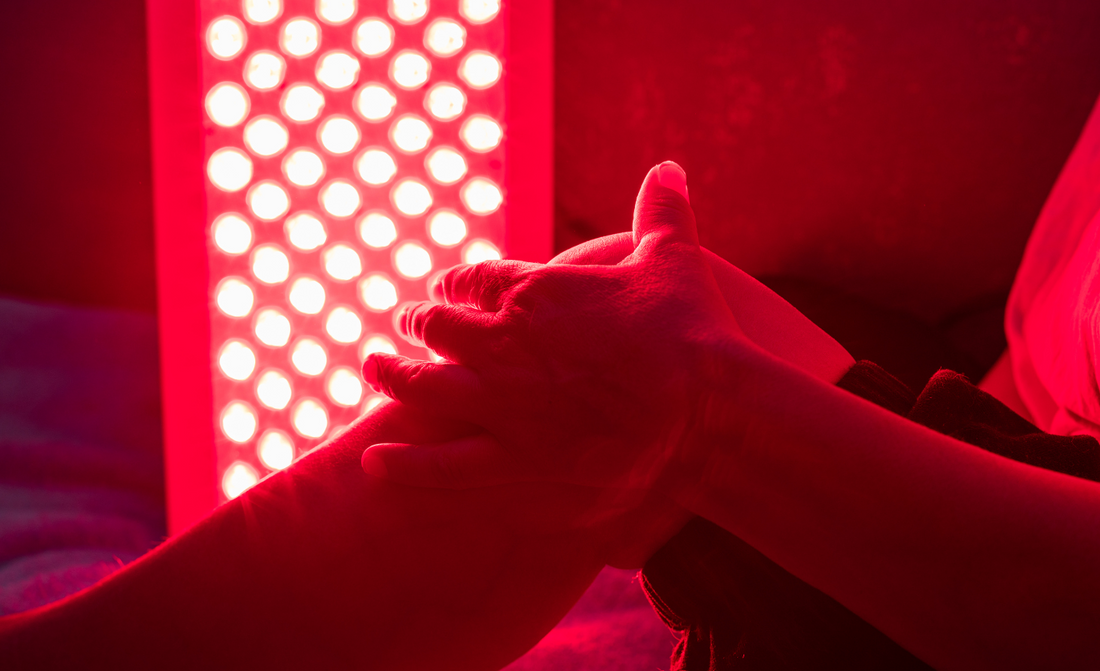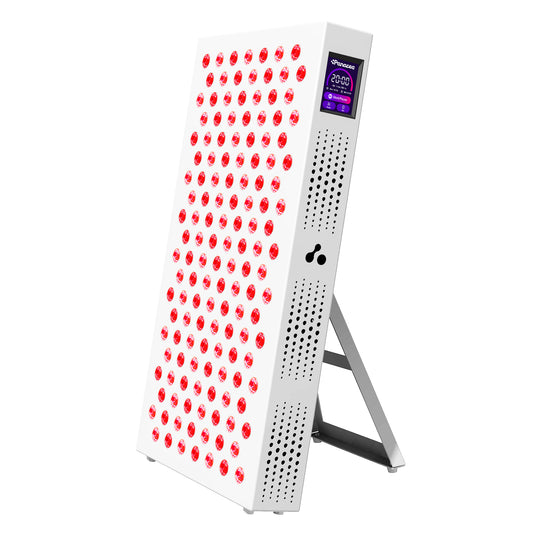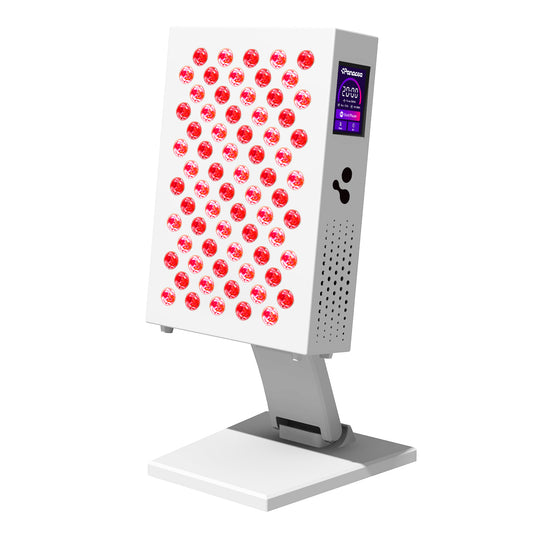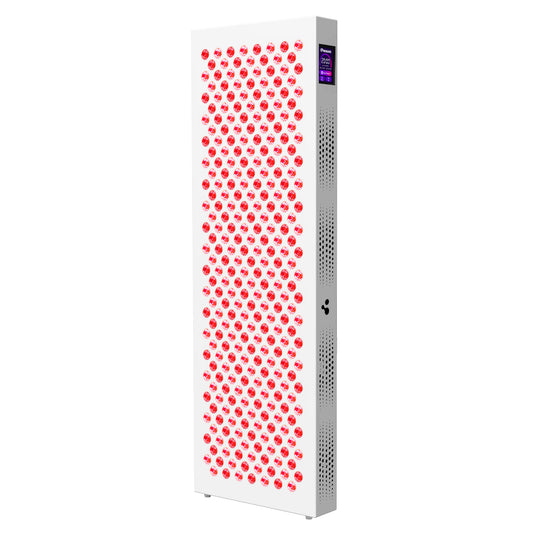
What is red light therapy?
Everything you need to know about photobiomodulation, wavelengths and applications
Red light therapy, also known as photobiomodulation therapy , is an innovative and rapidly growing treatment method that uses light in specific wavelengths to support the body at a cellular level. Unlike medication or surgery, red light therapy is completely non-invasive and has no side effects. The technology behind it is deeply rooted in science and is now widely used in the medical world, sports, skin care and wellness.
At Panacea Light Therapy we work with the most effective therapeutic wavelengths: 630 nm, 660 nm, 810 nm, 850 nm, 940 nm and 1060 nm . Each wavelength has a unique effect and penetrates to a different level in the tissue.
How does red light therapy work?
The effectiveness of red light therapy is due to a process called photobiomodulation . This involves the absorption of light photons by mitochondria – the energy factories of our cells. Specifically, the enzyme cytochrome c oxidase reacts to this light, which causes more ATP (adenosine triphosphate) to be created: the fuel of the cell.
What happens in the body?
- Stimulation of cell regeneration
- Increased blood flow
- Reduction of inflammation
- Accelerated muscle recovery
- Increased collagen production
- Better oxygen uptake in cells
The effect depends on the wavelength used. The longer the wavelength, the deeper the light penetrates into the body.
The therapeutic wavelengths of Panacea Light Therapy
630 nm – For superficial skin layers
The 630nm wavelength is especially effective in skin rejuvenation, wound healing and reducing inflammation in the upper skin layers. It promotes cell renewal and stimulates collagen synthesis.
Applications : scars, rosacea, superficial acne
Supporting research : Salehpour et al. (2019), link
660 nm – Skin rejuvenation and anti-inflammatory
This is the most researched red wavelength, with strong results for skin health and inflammation reduction.
Applications : skin aging, eczema, psoriasis, wound healing
Research : Lim (2021), SPIE
810 nm – Deep action for muscle and nerve tissue
The 810nm wavelength is able to penetrate deep into muscle tissue and nerves. It is often used for muscle pain, sports injuries, and neurological disorders.
Applications : muscle recovery, osteoarthritis, brain function
Research : Lin et al. (2024), Neurophotonics
850 nm – Deeper inflammation inhibition
The 850 nm infrared waves help activate lymphatic flow, repair muscles and reduce chronic inflammation.
Applications : rheumatism, fibromyalgia, lymphatic recovery
Research : Hernández-Bule et al. (2024),MDPI
940 nm – Pain relief and vascular stimulation
With deep penetration, 940nm is ideal for joints, tendons and deep muscles. This wavelength is also linked to improved microcirculation and oxygenation.
Applications : joint pain, muscle tension, back pain
Research : Salehpour et al. (2019), Liebertpub
1060 nm – Innovative for fat burning and brain stimulation
This relatively new wavelength has a unique property: it penetrates deep into fat tissue and brain tissue. It is often used in research for cognitive support and fat reduction.
Applications : Alzheimer's research, fat reduction (e.g. abdomen, thighs)
Research : Semyachkina-Glushkovskaya et al. (2023), MDPI
What are the benefits of red light therapy?
1. Skin improvement
Red light improves the texture, elasticity and overall appearance of the skin. It is used for:
- Reducing fine lines
- Treatment of acne
- Scar recovery
2. Pain relief
Due to its anti-inflammatory effect, red light naturally reduces muscle and joint pain.
3. Accelerated muscle recovery
Athletes use light therapy to speed up muscle recovery and improve performance.
4. Support of brain functions
Research shows that certain wavelengths (810–1060 nm) can support cerebral blood flow and cognitive function.
5. Fat burning
1060 nm is used for non-invasive fat reduction: fat cells are broken down without damage to surrounding tissue.
Supporting studies:
- Salehpour, F. et al. (2019). Photomedicine and Laser Surgery . https://www.liebertpub.com/doi/abs/10.1089/photob.2019.4676
- Lin, H. et al. (2024). Transcranial photobiomodulation for brain diseases . Neurophotonics. https://www.spiedigitallibrary.org/journals/neurophotonics/volume-11/issue-1/010601
- Semyachkina-Glushkovskaya, O. et al. (2023). Phototherapy of Alzheimer's disease . International Journal of Molecular Sciences. https://www.mdpi.com/1422-0067/24/13/10946
- Hernández-Bule, ML et al. (2024). Photobiomodulation on skin regeneration . MDPI.https://www.mdpi.com/1422-0067/25/8/4483
- Lim, S. (2021). Photobiomodulation for neurodegenerative diseases . SPIE Proceedings. https://www.spiedigitallibrary.org/conference-proceedings-of-spie/11628/116280O
Do you want to benefit from the scientifically proven advantages of red light therapy? Discover our devices or contact us without obligation for personal advice.







